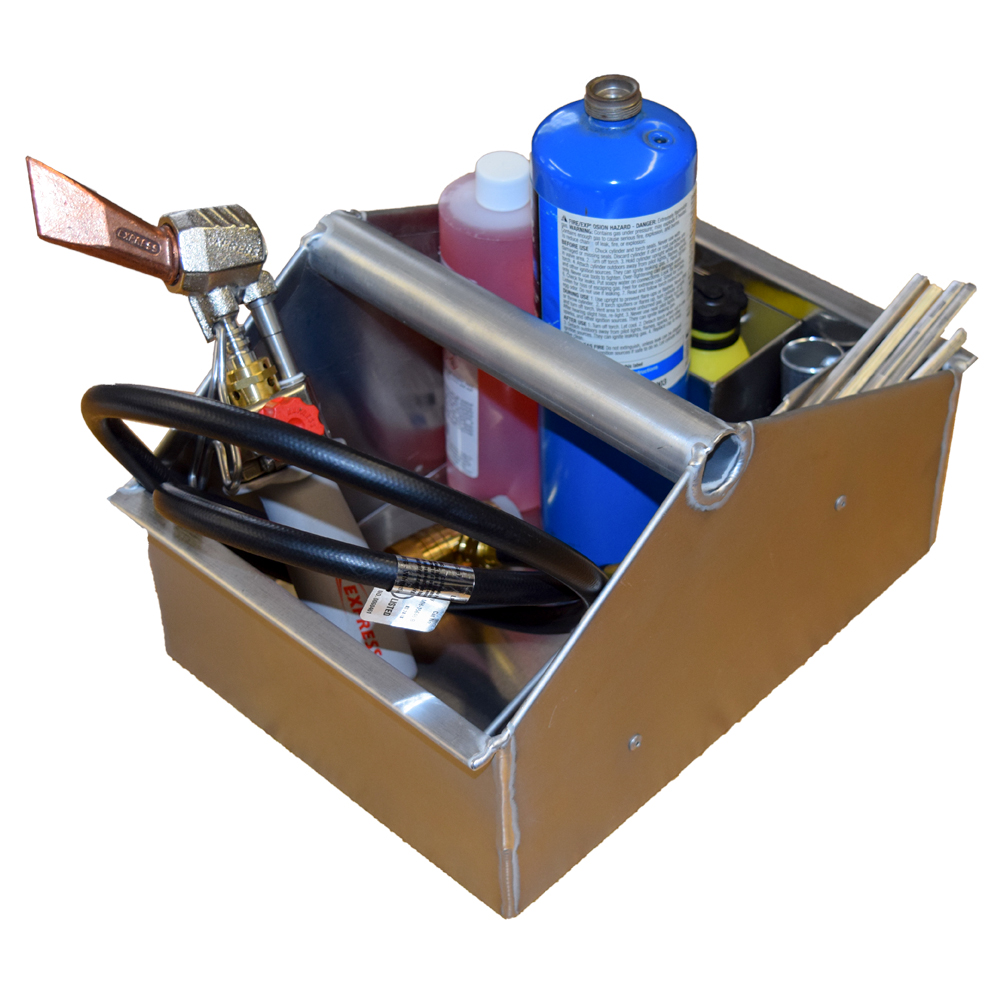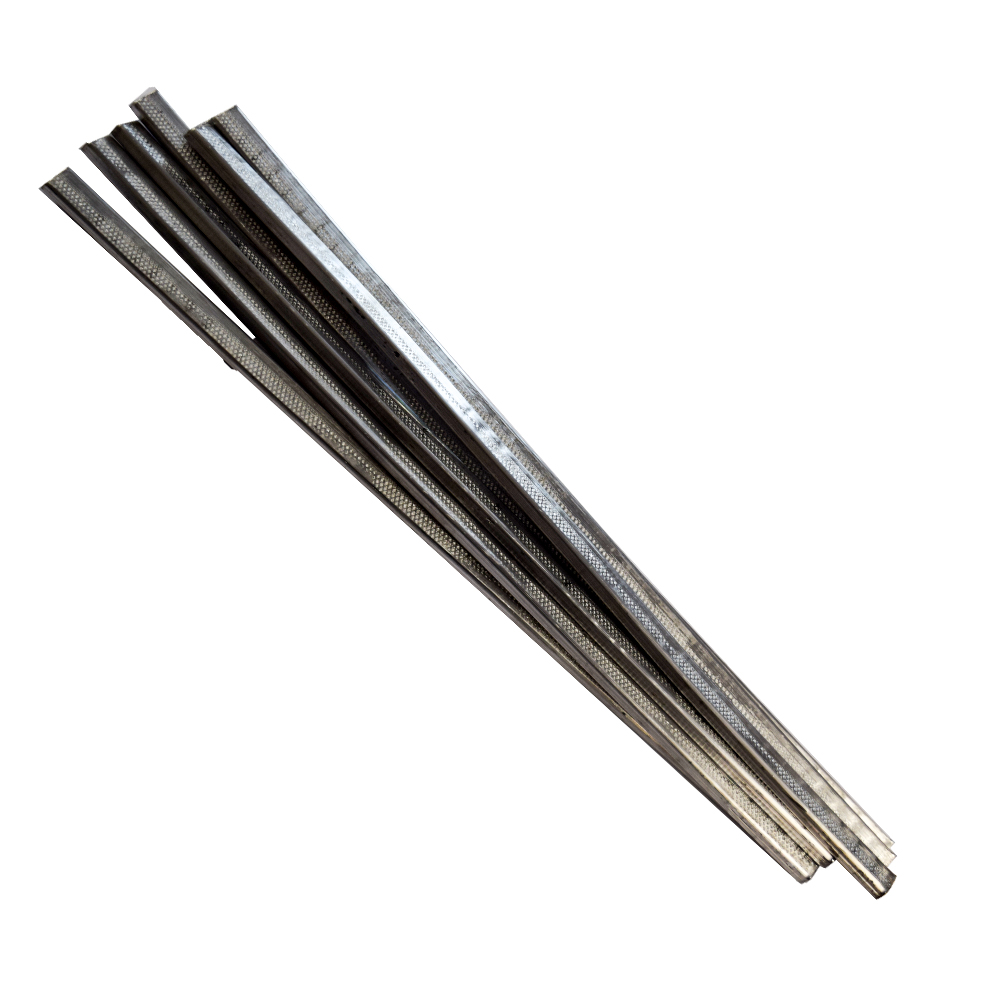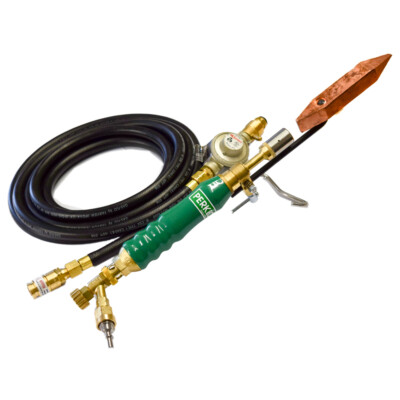SOLDERING 101: Essentials for Roof Soldering

Solder
 Solder is defined as a low melting alloy that is used to join two pieces of metal together. In the roofing trade, the most common makeup of solder will be a mixture of tin and lead. The 3 most common solders for roofing are listed below
Solder is defined as a low melting alloy that is used to join two pieces of metal together. In the roofing trade, the most common makeup of solder will be a mixture of tin and lead. The 3 most common solders for roofing are listed below
- 50sn/50pb (Tin/Lead) Solder – 361° – 421° F working range
- 60sn/40pb (Tin/Lead) Solder – 361° – 374° F working range
- Pure Tin (96% Sn, 4% Ag) Solder – 430° F working range
For a more in depth description of the differences in these solders, Click Here
Forming Equipment
Forming equipment can come in a variety of shapes and sizes and it’s main purpose would be to form the seam that is to be soldered. Common forming tools include
- John Stortz & Son Seaming Pliers
- Tinner’s Hammers (Soft Faced)
- Rivet Gun & Rivets
The way a seam is formed can be a major factor in getting a successful, watertight solder result. A couple examples of seam types are listed below. Note that when working with 20oz copper, it is recommended to lap and rivet seams that are going to be soldered. You should also rivet seams that may be put under tension.



Abrasives
 The use of abrasives will aid in cleaning any debris or oxides from the joint that is being soldered. Feel free to use an abrasive wheel (drill attachment) or a pad to work the joint before any flux is added. This will be particularly important if the metal is not fresh from the coil and has had time to develop oxides on its surface.
The use of abrasives will aid in cleaning any debris or oxides from the joint that is being soldered. Feel free to use an abrasive wheel (drill attachment) or a pad to work the joint before any flux is added. This will be particularly important if the metal is not fresh from the coil and has had time to develop oxides on its surface.
Flux & Flux Bottle
Flux: A substance that facilitates soldering, brazing, and welding by chemically cleaning the metals to be joined.
One of the most important aspects of any soldering job, the flux will promote “wetting” of the solder joint and allow the solder to flow and adhere to the surface free of contamination. Often times in roof soldering, flux is “acid based” (zinc chloride) and will have a strong cleansing property in order to strip the substrate from its light film of oxides. It also protects the surface from oxidizing during the heating process.
At Stortz Tools, we sell a variety of fluxes that you can pair with the specific metal that you are soldering. Some of the more popular brand names are Ruby Fluid (Ruby Red) or Express brand Flux for Oxidized metals. Some of these bottle have a built in cap and brush in order to cleanly apply the flux. A glass jar is also a good solution for containing your flux on the job and preventing spills. Keep in mind that you should neutralize any flux that makes contact with your metal after soldering. Use a baking soda solution to clean the seam and prevent unnecessary corrosion.
Notice in the video below how the worker liberally applies flux to the seams exterior. If the seam is being locked, an ideal situation would be to have already applied a thin layer on the inside of the seam.
Heat Source – Soldering Iron
Your heat source will be a key component to your soldering project. We support the movement away from open flame soldering. That means we believe that transferring heat from a flame to a soldering copper (iron) and then to the material being soldered. This is primarily for safety reasons to prevent a fire from being started but also is a gentler process for protecting the finished material.
Iron heat sources
- Propane – Easiest to use
- Acetylene – Burns the hottest
- Electric – Stable and good for indoor work
- Furnace – Historic style of soldering with copper hand irons
A workable soldering iron in propane or acetylene will cost between $250-$400. They are equipped with a replaceable copper tip. The tips are offered in a variety of shapes and sizes. It is generally best practice to use tips from the same manufacturer as the iron itself.
-
Sale!

Express Self Igniting Soldering Kit
Details17 customer reviews$375.00 – $450.00 -
Sale!

Aero Duplex Acetylene Soldering Torch Kit
Details12 customer reviews$385.00 – $460.00 -

Perkeo Soldering Iron w/ Copper Bit
Details9 customer reviews$399.00 -

American Beauty 550 Watt Soldering Iron
Details $368.00 -

SIK1-10 Sievert Premium Soldering Iron
Details $850.00
Sal Ammoniac Bar – Cleaning Mixture
Cleaning your copper tip is good practice to start any soldering job. A very effective way to do this involves heating your iron and rubbing the tip on a Sal-Ammoniac block. The Sal-Ammoniac block will clean the dirt and debris from the tips surface and allow you to pre-tin your tip.
Pre-Tinning Your Copper Tip
When your tip is clean and heated, you should put a dash of solder to the copper and continue to rub on the Sal-Ammoniac block. This process will leave you with a thin coating of solder on the copper tip and will promote a much smoother flow of solder when you apply it to the metal.
Cleaning Mixture
As you continue soldering, your copper tip will develop dirt, called dross, on its surface. You will find that it is easier to solder with a freshly cleaned tip. To clean the while you are soldering, you can dip the tip into a jar of cleaning solution while it is hot. The solution is comprised of 50% Ruby Fluid and 50% water. Keep a small jar next to your work and keep your tip clean throughout your soldering.
Fire Safety Equipment
This one is pretty self-explanatory. You need to be prepared for a fire emergency. You should have some sort of water and/or extinguisher on site and ready to use. It’s not a problem until it happens, and then it is an enormous problem.










